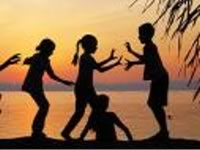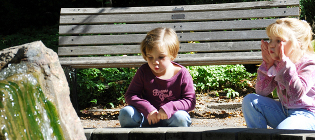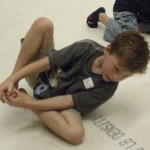Distinctive Competence

Unlike any other movement program that uses movement for exercise, Wellness Through Movement (WTM) uses movement to understand behavior. Before we learned to reason, we needed to feel movement in our bodies to learn.
The WTM approach evaluates cognitive functioning by observing movement patterns. The process teaches through the experience of movement. The information from motion, whether the activity is vibration, sensation, or action, guides attention into a new understanding of one’s perception. Action is more than an exercise; it is a group of neuro-feedback patterns talking to the brain. Doing, thinking, saying, and listening are all patterns of neuro-feedback. In other words, a wide-angle lens develops in the brain from these sensations. When movement becomes cognition there is a corresponding movement in the muscular-skeletal system. The results are the development of cognition. Simultaneously, emotional and physical healing often takes place.
Learn From the Body

Reasoning comes from thinking, but knowing comes from experience. Being alive in a body and feeling movement is what gives us experience. Experience is what it is to have the body talk to the brain.
Program’s Objectives

- Clarify Embodied Awareness
- Determine Spatial Awareness Inside the Body
- Experience Embodied Cognition
Surprisingly, when children lie on the floor and are asked, “What is touching the floor?” They say, “Nothing.”
Parts I & II
There are two parts to the WTM program. Part I is designed for the general public and is simple to implement. It includes both the animated video program, Get Sensational Attention and the book, A New Sensory Self Awareness. Get Sensational Attention has two tracks, a short and long version. The objective for both versions is to shift attention from solely the outer circumstance to listening from a place within the body in order to respond. The short version takes seconds to implement. In the long version, the User Guide helps to give its reader an experience of the lesson. It serves to bring the body and brain together to improve and sustain the benefits. These benefits can then create a healthy lifestyle. The processes in Part I are easy to implement with any physical movement programs, teaching style, or lesson plan.
Part II of WTM is for movement, yoga, research, counseling, or child development professionals. The methodology is not intended to clarify right or wrong moves, but rather, to sense the uniqueness of an individual’s behavioral patterns. With movement and the sense of proprioception, patterns reeducate. (Proprioception is one’s own perception based on biological and cognitive stages of development; it’s an insight, or a “sixth sense,” according to Charles Sherrington, neurophysiologist.) Just as developmental actions interconnect to grow, these lessons have a biological-like nature that organically grows. To ensure ease and sustainable results, the biological sensations of actions are the key to obtaining lifetime results.
Link to GET SENSATIONAL PROGRAM
(√) Why teach children at such a young age?
Though anyone can learn from the body/mind organization, the critical age to teach this is between five and eight years old. The process of movement in development is the major thoroughfare of the sensory-motor systems and behavior. This awareness helps all children, not just children with behavioral challenges. This “movement” is not about motor skills. It is the physicalness of the mind processing information through the body. Motion is bundles of sensations engaged in the wholeness of the senses, the mind, and the world. (See LINK Science and Feldenkrais Practitioner)
On Amazon
Meeting Educational Standards
GENERAL LEARNER OUTCOMES IN PROGRAM
• Expand self awareness for the safety of self and others
• Educate sensory awareness tied to cognition and IQ
• Practice turning attention inward and self-inflicted low self-esteem perspectives
• Enhance awareness of the mind’s internal dialogue and where attention focuses with listening skills and communication
• Learn to use the sensations of physical guidance for problem solving
• Calm tension to decrease violent tendencies
• Develop social character from awareness of self and self in relation to others
STANDARDS COVERED IN PART I AND PART II of the PROGRAM
▪ Intra and Inter Spatial Awareness (personal and emotional space)
▪ Social and emotional benefits to physical activities
▪ Increased pulmonary capacity and calm nervous system
▪ Basic locomotor skills alone, with a partner, and in small groups e.g. hopping, skipping, jumping, running.
▪ Basic non-locomotor skills e.g. twisting, pushing, pulling
▪ Basic movement concepts and control e.g. changes in direction, space, time, effort and relationship in traveling
▪ Physical activities e.g. locomotor or chasing and fleeing activities
WELLNESS & HEALTH IN PROGRAM
o Build awareness of the body and how to use the body to calm the brain
o Acquire personal tools to decrease hyperactivity and anxiety
o Fuel curiosity and attention
o Stir innovation and creativity
o Acquire respect and appreciation for uniqueness and differences of self and others
o Expand self-awareness & improve posture
o Align attitude with physical sensation
o Decrease passion to fit in to “out there” pressures and urges for substance abuse
o Identify healthy behaviors and impact on personal health
o Acquire tools to express needs, conditions and wants in healthy ways
ACADEMIA
Explore ways of learning through movement activities including math, English, and test taking.
MOST IMPORTANTLY FUN!
Assessments
• Does the child demonstrate more patience, calmness, and cooperation?
• Does the child resort to the body techniques to calm the mind?
• Does the child feel more balanced emotionally and physically?
• Is the child more innovative in problem solving?
• Have the child’s attention and participation improved?
• Have the child’s test scores and academic performance improved?

__________________________________________________
Lesson Examples
“No Place Like Home” lesson (Part 1 series) With “Home,” or dual attention, the virtue of respect naturally unfolds in a child. Attention is redirected to breath and the sensation of sound moving down inside the body. When attention is directed to turn inward, perception shifts and emotional reactions calm. When one’s attention is connected to their physical sensation, a feeling of centeredness settles into the mind. Children especially find peace within the storm of conflict and understand how to express their feelings.
Personal Bubbles Freeze Dance lesson (Part 1 series) uses big beat music to create a “storm” of fun and excitement. When the children bump into each other, the music “freezes,” and attention switches from “out there” to inside. To find “Home” attention is directed to the physical vibration of the humming sound saying, “hooooommmmme.” The vibration of the sound in the body gives a tangible directive for attention. In Home, more attention is now inside the body than outside in the external environment. Children return to the game playing freeze dance, however, now they play freeze dance from “Home.” From Home no one seems to bump, and children are surprised. “What changed?” Awareness.
3. “Panda Bear Bowling I” lesson (Part II series) is a movement to rewire the mind’s ability to use the body’s sense of balance and coordination and stabilize alignment from there. As a result, the sense of balance and stability improves self-confidence and the ability to follow directions. Details of how these functions are related are described in the book.

